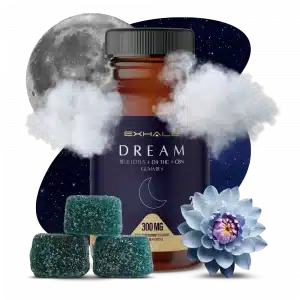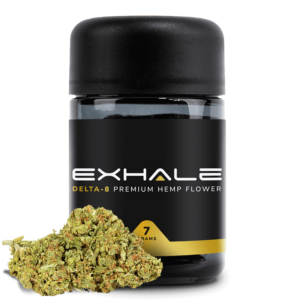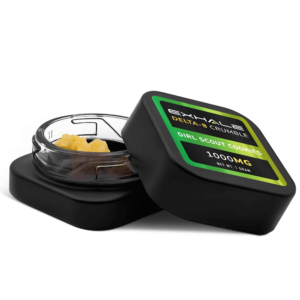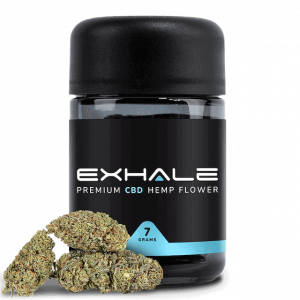Home » Shop Blue Lotus
Blue Lotus
BUY Blue Lotus PRODUCTS FOR SALE
Get 25% Off your order right now
Our products are Pure & Simple. Made with natural, wholesome, plant-based ingredients that put the “heal” in your health.
All of our products are tested and verified through a 3rd party to ensure accuracy. We test for potency & pesticides.
All of our products are Farm Bill-compliant, made from USA-grown hemp that contains 0.3% D9 THC or less.
We provide discreet shipping for all our products, safeguarding your purchase and protecting your privacy.
Our products are Pure & Simple. Made with natural, wholesome, plant-based ingredients that put the “heal” in your health.
All of our products are tested and verified through a 3rd party to ensure accuracy. We test for potency & pesticides.
All of our products are Farm Bill-compliant, made from USA-grown hemp that contains 0.3% D9 THC or less.

We provide discreet shipping for all our products, safeguarding your purchase and protecting your privacy.
SEE WHAT OUR CUSTOMERS ARE SAYING ABOUT Blue Lotus
Relaxing....
All good
Live Resin Delta 9 THC Gummies
Delta-8 Pre-Rolls - OG Kush (5-pack)
These gummies help me sleep well with no sleep “hangover”. I highly recommend this product to those who need help sleeping at night.
CBD + THC Gummy Cubes
These are very good gummies flavorful and potent Would definitely recommend a half or less to start and increase as desired would recommend
I have battled sleep issues for years. I take one gummy about 30 minutes before I lay down at night. I can feel my body and mind slowing down, and fall asleep easily. I stay asleep too! Thank you Exhale Wellness, I only wish I’d found this product sooner!
**** Panther THCA Flower
Great stuff
Delta 8 Individual Pre-rolls
smooth ride, very pleasant, lasts awhile too
These are perfect to chill out! I sleep great.
3000mg Delta 8 Gummies
The Delta-8 Gummy Cubes (50mg-100mg) are the best sleep gummies I have ever tried. They are so strong for me and my spouse that if we take a full gummy, we have to eat it early in the evening to not be sleepy the next morning. Otherwise, we find that 1/2 gummy is enough for us. We have a monthly subscription for this gummy and the CBD + Delta-9 THC. We love both products, and the only thing I wish is for the company to lower the minimum purchase needed for free shipping. We love this company so much that we give Exhale products as gifts for family and friends.
You have most likely seen this striking blue water lily before. Nymphaea caerulea, also known as Blue Lotus, is a fascinating plant. It was a regular fixture in ancient cultures worldwide, celebrated for its relaxing and calming effect. As with many other plant medicines, the blue lotus flower is a regular fixture in pagan and religious ceremonies across the ages, even down to its nutritious seeds!
The revival of traditional medicine leads many to rediscover restoratively potent plants, like the blue lotus flower, and explore their potential health benefits. Considered a sleep aid for some and a companion plant to the spiritual journey for others, there are many potential therapeutic applications for the blue lotus flower. From calming the nervous system to gently engaging serotonin receptors, Lotus emerges from the mud as a meditation symbol, creating a new realm of possible applications in the digital age. Join us as we rediscover the effects of this incredibly useful flower from ancient times!
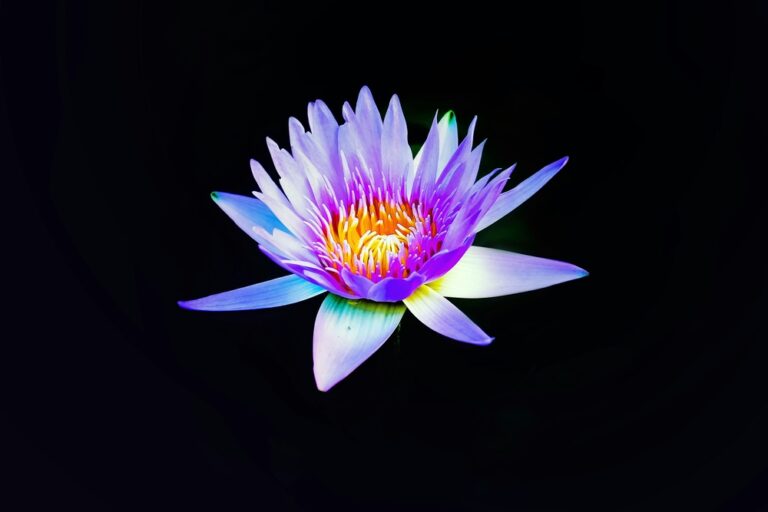
What Is Blue Lotus?
Blue Lotus, scientifically known as Nymphaea caerulea, is a captivating blue waterlily with cultural and historical significance. Native to Egypt and parts of Southeast Asia, this lotus flower has been used by ancient cultures for centuries. It is known for its various medicinal and psychoactive properties.
In ancient Egyptian cultures, for example, it is depicted as a sacred blue lily in numerous hieroglyphs. Among other plants and herbs, ancient Egyptians used blue Lotus as a traditional medicine for relaxation and a heightened sense of well-being.
Blue Lotus contains more than one psychoactive compound, namely apomorphine and nuciferine. Both have the potential to contribute to its calming effects. Often brewed into teas or used in herbal blends, enthusiasts appreciate its potential to induce relaxation, alleviate stress, and promote mild euphoria without the sedative side effects.
Beyond its traditional uses, Blue Lotus has gained popularity in contemporary wellness circles. As with any botanical substance, it’s important to approach consumption responsibly and be aware of individual sensitivities. Blue Lotus continues to captivate those seeking a natural, gentle way to unwind, whether for cultural exploration or modern relaxation.
How Do You Use Blue Lotus?
Blue Lotus, also known as Nymphaea caerulea, is a plant with psychoactive properties used historically in various cultures for its calming and relaxing effects. However, it’s important to note that the legality of blue Lotus varies in different regions, and its use for recreational purposes may be restricted or prohibited in some areas.
There are several ways to use the blue lotus flower, and nowadays, there are various products. Each person will have their own preference, and one can enjoy the benefits of blue Lotus in any of the ways described below. Assuming that the use of blue Lotus is legal in your region, here are some of the most common forms for consumption:
Tea Infusion
One of the most common methods is to make a tea infusion using dried blue lotus flowers or extract. Simply steep the flowers or extract them in hot water for a certain period, strain, and drink.
Wine or Alcohol Infusion
Some people soak blue lotus flowers in wine or other alcoholic beverages for an extended period. The alcohol helps extract the active compounds from the plant, and the resulting mixture can be consumed in moderation.
Smoking or Vaporizing
Smoking or vaporizing dried flowers or extracts is another method. This can provide a quicker onset of effects than ingestion.
Tinctures
Blue lotus tinctures are liquid extracts one can make by steeping the plant material in alcohol or another solvent. The resulting tincture can be consumed in small amounts.
Extract
Some people use the plant’s resin, a concentrated form of blue lotus extract. This water-soluble extract can be dissolved, mixed with other substances, or ingested in small amounts.
Capsules or Pills
Blue lotus extract is sometimes put into softgels and pills. They provide a convenient and measured way to consume the substance.
Mixing with Other Herbs
Blue Lotus can be combined with other herbs or substances for a customized experience. However, caution is advised, as interactions between different compounds can vary.
Always remember that individual responses to Blue Lotus can vary, and it’s crucial to be aware of the plant’s legal status in your area. Additionally, before trying any new substance, starting with a small amount is wise to gauge your sensitivity and reaction. If you have any health concerns or are taking medications, consult with a healthcare professional before using blue Lotus or any other psychoactive plants.
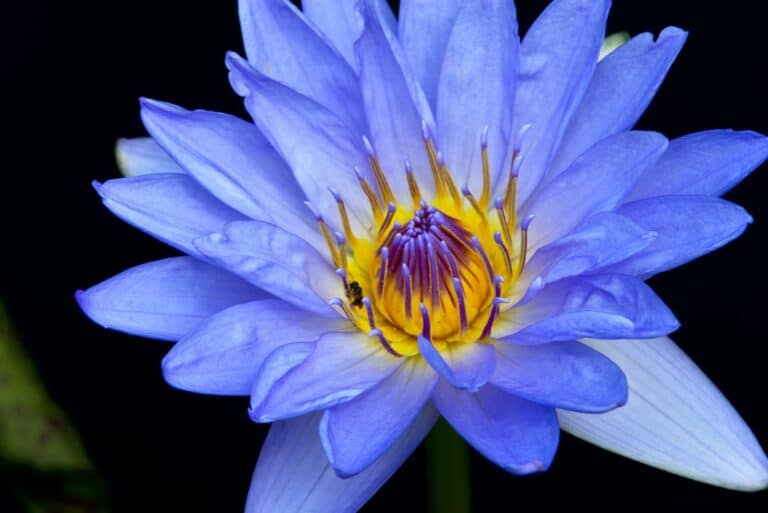
Are Blue Lotus Flowers Edible?
Yes, blue lotus flowers (Nymphaea caerulea) are considered edible. However, it’s essential to note that while they are technically edible, they are more commonly used for their psychoactive properties and have been historically consumed for their calming and relaxing effects rather than as a food source.
If you’re interested in trying blue lotus flowers as a part of your diet, you can incorporate them in various ways:
Tea. Make a tea infusion by steeping dried blue lotus flowers in barely boiling water. This is one of the most common and traditional methods of consumption.
Salads. Some people use fresh or dried blue lotus petals in salads for their visual appeal and mild flavor.
Garnish. Use blue lotus petals as a decorative garnish for desserts, drinks, or other dishes.
It is best to source blue lotus flowers from good suppliers. This ensures they are free from pesticides and contaminants. Also, be aware that people are mainly interested in Blue Lotus because of its mind-altering effects. So, if you eat it, do so in moderation.
As with any new addition to your diet, especially one with mind-altering properties, start with small amounts. Pay attention to how your body reacts. If you have health concerns or take medications, consult a healthcare professional. Do this before adding blue Lotus or any new substance to your diet.
Can Blue Lotus Be Smoked?
Yes, blue Lotus can be smoked or vaporized, and this method is one of the traditional ways it has been consumed. Smoking or vaporizing blue lotus flowers provides a more rapid onset of effects than other methods, such as making a tea infusion. Some users find this method preferable for its quick action and the potential to experience the plant’s mild psychoactive effects.
To smoke or vaporize blue Lotus:
Dried Flowers: The dried blue lotus flowers can be used for smoking or vaporizing. Ensure that the flowers are completely dry before using them in this manner.
Herbal Blend: Some people mix dried blue lotus flowers with other herbs or smoking blends to create a more palatable or smoother smoking experience.
Vaporization: If using a vaporizer, ensure it is suitable for herbal substances. Vaporizing can be a healthier alternative to smoking, as it avoids the combustion associated with traditional smoking.
It’s important to note that the effects of smoking or vaporizing blue Lotus are generally milder compared to other psychoactive substances. Users may report feelings of relaxation, mild euphoria, and enhanced mood. Dosage and individual sensitivity can vary, so it’s advisable to start with a low amount and adjust as needed.
What Is Blue Lotus Tea?
Blue Lotus tea is lotus flowers steeped in boiling water. The aim is to extract the apomorphine and nuciferine into the drink. Here is a simple recipe for Lotus tea:
Instructions:
Boil Water: Heat water in a kettle or saucepan until it reaches a temperature just below boiling. Alternatively, if using a temperature-controlled kettle, set it to around 200°F (93°C).
Prepare Lotus Flowers: If using dried Blue Lotus flowers, measure the desired amount. Typically, 5-10 dried flowers per cup of tea are recommended. If using Blue Lotus tea bags, prepare one tea bag per cup.
Steep the Flowers: Place the dried Blue Lotus flowers or tea bag into a teapot or mug.
Pour The Water: Carefully pour the water over the Blue Lotus flowers or tea bag, covering them completely.
Steep the Tea: Allow the Blue Lotus flowers or tea bag to steep in the hot water for 5-10 minutes. Steeping time can vary based on personal preference for strength.
Strain (if necessary): If you used loose dried Blue Lotus flowers, you may want to strain the tea before drinking to remove any flower particles. If you use tea bags, you can skip this step.
Serve: Pour the strained Blue Lotus tea into cups and serve hot. You may sweeten it with honey or add a slice of lemon if desired.
Enjoy: Savor Blue Lotus tea’s calming and subtly floral flavor as you relax and unwind.
Note: Blue Lotus tea is known for its mild sedative effects, so it’s best enjoyed in moderation. If you’re new to Blue Lotus tea, start with a smaller amount and gradually increase as you gauge your tolerance and desired effects. Additionally, pregnant or nursing women should avoid consuming Blue Lotus products. As always, consult a healthcare professional with any concerns or medical conditions.
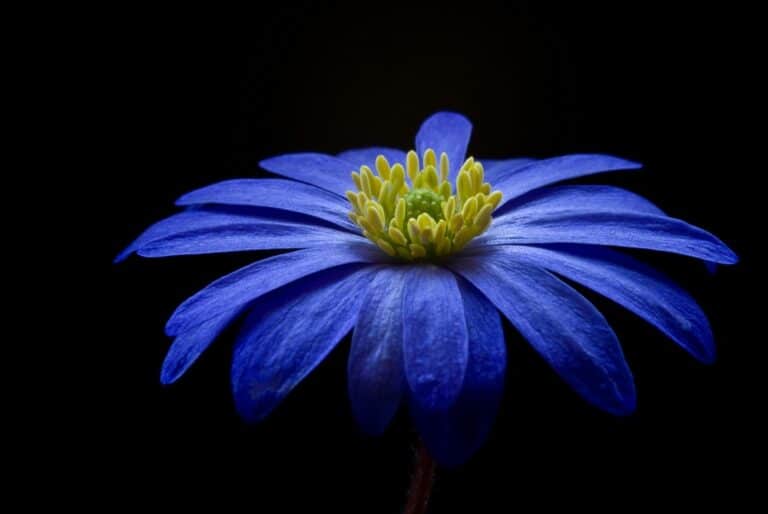
Benefits of Having Blue Lotus Flowers
Blue Lotus (Nymphaea caerulea) has been traditionally used for its potential benefits, though scientific research is still limited. Here are some of the main potential benefits consuming Blue Lotus can offer:
Relaxation and Stress Reduction. Lotus is often valued for its calming and soothing properties. Consuming Blue Lotus tea or extracts may help promote relaxation, alleviate stress, and ease anxiousness.
May Improve Sleep Quality. Due to its mild sedative effects, Blue Lotus is sometimes used to support better sleep. Drinking Lotus tea before bedtime may help individuals achieve deeper, more restful sleep.
Enhanced Mood. Often believed to have mood-enhancing properties, some consumers report feeling uplifted, euphoric, or in a better mood after consuming Blue Lotus products.
Aphrodisiac Effects. In traditional medicine, the plant has been regarded as an aphrodisiac and libido enhancer. It’s thought to stimulate desire and improve sexual performance in some individuals.
Cognitive Enhancement. May have cognitive-enhancing effects, such as improving focus, concentration, and mental clarity. Some users report experiencing heightened awareness and enhanced creativity after consuming.
What Are the Magical Properties of Blue Lotus?
Blue Lotus (Nymphaea caerulea) has been associated with various magical and spiritual properties in different cultures throughout history. These beliefs are often rooted in culture or religion. Scientific evidence supporting them is limited. Here are some of the blue waterlily’s supposed magical properties and associations:
Spiritual Enhancement
Blue Lotus is often regarded as a sacred plant with the potential to enhance spiritual experiences. It has been used in religious rituals and ceremonies to induce a sense of tranquility and connection to the divine.
Relaxation and Calming
One of the primary traditional uses of this striking flower is its calming and relaxing effects. It is believed to help reduce stress and anxiety and promote well-being, making it conducive to meditation and spiritual practices.
Enhanced Dreaming
Some cultures believe that blue Lotus can enhance dreams and facilitate lucid dreaming. It is thought to have a connection to the dream world and may be used to promote vivid and meaningful dreams.
Aphrodisiac Properties
Certain traditions view the Lotus as an aphrodisiac that enhances libido and sexual experiences, associating it with love, fertility, and sensuality.
Opening the Third Eye
Blue Lotus connects to the concept of the third eye, which represents intuition, insight, and spiritual awareness. Some people use Lotus to facilitate meditation and open the third eye chakra.
Protection and Purification
In certain cultures, blue Lotus is thought to have protective qualities and may be used in rituals to ward off negative energies or promote spiritual purification.
It’s crucial to approach these beliefs with cultural sensitivity. People think the plant has magical or spiritual properties, but these ideas vary widely across different traditions. The plant has a rich history and culture. However, research on its magic or metaphysics is limited. Those interested in the spiritual side of the Lotus should explore its cultural contexts. They should also consider consulting experienced practitioners.
How Long Does Blue Lotus Last?
The duration of the effects of blue Lotus (Nymphaea caerulea) can vary depending on factors such as the method of consumption, dosage, individual sensitivity, and the form of the plant used (dried flowers, extract, etc.). Generally, the effects of blue Lotus are mild and relaxing. They may include a sense of euphoria, tranquility, and can have a positive effect on mood. Here’s a general guideline for the duration of effects based on common methods of consumption:
Lotus Tea:
The effects of a blue lotus tea infusion typically last for a few hours. The onset of effects may take around 30 minutes to an hour after consumption.
Smoking or Vaporizing:
If you smoke or vaporize blue Lotus, you may feel the effects more rapidly than ingesting, but with a shorter duration. The effects may last for 1 to 2 hours.
Alcohol Infusion:
Soaking blue Lotus in alcohol can deliver effects similar to those of a tea infusion. The duration is generally a few hours.
It’s essential to start with a low dose and to be mindful of potential interactions with other substances. Additionally, individual responses can vary, so what works for one person may not be the same for another.
As with any psychoactive substance, it’s important to use caution and be aware of the legal status of Blue Lotus in your area. If you have any health concerns or are taking medications, it’s advisable to consult with a healthcare professional before using Lotus flowers or any other herbal supplement.
How Long Does Blue Lotus Stay in Your System?
The amount of time that blue Lotus stays in your system can vary based on individual metabolism, dosage, and frequency of use. However, we lack specific information regarding the body’s breakdown of the active compounds in scientific literature.
Does Blue Lotus Show up on a Drug Test?
Generally speaking, no, it does not. It’s important to note that blue Lotus is not a controlled substance in most regions, and it is not typically included in standard drug tests. Standard drug tests, such as urine tests or blood tests, usually detect specific drugs or their metabolites. Lotus contains various compounds, but it does not contain the same psychoactive substances commonly targeted in drug tests.
Suppose you are subject to drug testing and have concerns about the substances you consume. In that case, we suggest checking with the organization conducting the drug test or consulting with a healthcare professional for guidance. Be sure to provide a list of any herbal supplements or substances you have used recently.
Why Buy Blue Lotus From Exhale
Choosing Exhale Wellness for your Blue Lotus needs ensures unparalleled quality and a commitment to your well-being. We source our Blue Lotus products from the finest organic cultivators, guaranteeing purity and potency. With rigorous quality control measures in place, you can trust that every batch meets our stringent standards for excellence. Plus, by purchasing from Exhale Wellness, you’re not just investing in a product – you’re joining a community dedicated to holistic health and mindful living. Experience the difference with Exhale Wellness and elevate your wellness journey today.
Blue Lotus FAQ
Discover answers to common queries about Blue Lotus in our FAQ section. Get insights into its uses, benefits, and more below.
Is Blue Lotus Legal in the US?
Yes, blue Lotus is legal for cultivation, sale, and purchase in every US state besides Louisiana. Keep in mind that while blue Lotus may be legal, its use and sale are often regulated for various purposes, and it’s crucial to obtain it from reputable sources to ensure product quality and purity.
How Old Do You Have To Be To Buy Blue Lotus?
The age requirement for purchasing Blue Lotus or any related products can vary depending on the jurisdiction and local regulations. Blue Lotus is not a controlled substance in many places, and its legal status may differ from one region to another. To determine the specific age requirement for purchasing blue Lotus in your area, you should check with local laws and regulations.
Does Lotus Have Side Effects?
Anecdotal reports suggest that, when consuming in moderation, most individuals tolerate Lotus well. However, individual responses can vary, and potential side effects may include:
Sedation or Drowsiness: Some users may experience feelings of sedation or drowsiness, particularly when using higher doses or in combination with other substances.
Headache: Some individuals may experience a slight headache after consuming Lotus flower.
Nausea: While uncommon, some users may experience mild nausea.
Allergic Reactions: Allergic reactions to blue Lotus are rare, but they can occur. If you have known allergies to plants or flowers, exercise caution.
Interactions with Medications: Blue Lotus may interact with certain medications or medical conditions. If you are taking medications, especially sedatives or medications that affect the central nervous system, consult with a healthcare professional before using Lotus flowers.
Dizziness: Some users have reported feeling dizzy after consuming Lotus products.
It’s important to note that these potential side effects are based on anecdotal reports, and more comprehensive research is needed to establish a clear understanding of Blue Lotus’s safety profile. Additionally, the lack of standardization in product formulations, as well as variations in individual sensitivity, makes it challenging to predict the specific effects or side effects for any given person.
Given the limited scientific data, it’s advisable to approach the use of Lotus with caution and moderation. If you choose to try Blue Lotus or any other herbal supplement, start with a low dosage, be aware of its potential effects on your body, and consult with a healthcare professional if you have any health concerns or are taking medications.
Is It Safe To Eat Lotus?
Yes, blue Lotus is generally well tolerated and safe for human consumption. As with any product that can have psychoactive effects, it is always wise to use moderation.
Is Lotus Actually Good for You?
While some people believe in its positive effects, it’s essential to note that we lack scientific research on the health benefits and safety of the blue waterlily. The available information is often based on traditional use, anecdotal reports, and cultural practices.
Potential Benefits
Potential positive aspects of lotus use include:
Mood Enhancement: Some individuals report a mild euphoric and mood-enhancing effect when using Blue Lotus. Many associate it with feelings of relaxation and tranquility.
Stress Reduction: Lotus has been historically used to alleviate stress and tension. It may have calming properties that promote a sense of well-being.
Enhanced Dreaming: In certain traditions, blue Lotus is thought to enhance dreams, act as a portal to the dream realm, or facilitate lucid dreaming.
Concerns & Limitations
However, it’s important to consider potential concerns and limitations:
Lack of Scientific Research: There is a scarcity of scientific studies on the safety and efficacy of blue Lotus. Consequently, we need more documentation on its effects and potential risks.
Individual Variation: Responses to Lotus can vary among individuals. Factors such as sensitivity, dosage, and individual health conditions can influence the experience.
Potential Risks: While Lotus is generally considered safe when used in moderation, there is a lack of long-term safety data. As with any psychoactive substance, excessive use may pose risks, and individual reactions can vary.
Legal Status: The legal status of Blue Lotus varies across regions. It’s important to be aware of the regulations regarding its use in your area.
Important Considerations
Before using Blue Lotus or any other herbal supplement, consider the following:
Consultation with a Healthcare Professional: If you have existing health conditions or are taking medications, consult with a healthcare professional before consuming Lotus products.
Start with Low Dosages: If you try Lotus products, start with low dosages to assess your sensitivity and response.
Legal Considerations: Be aware of the legal status of Blue Lotus in your region.
In summary, while some individuals report positive experiences with Lotus flower, limited scientific research suggests we should use caution. It’s crucial to approach its use with moderation and awareness of potential risks, and consulting with a healthcare professional is advisable, especially if you have specific health concerns.
Where Does Blue Lotus Grow?
Blue Lotus is a water lily, so it mostly grows in bodies of water. Its characteristic blue flowers often float on the water’s surface. The plant has broad, round leaves that also float on the water. Many enjoy cultivating it for its ornamental value and traditional uses in various cultures.
It’s worth noting that the cultivation and use of Lotus has extended beyond its native regions. However, the plant’s legal status may vary, so it’s important to be aware of regulations regarding its cultivation and use in different areas.
Where In The World Can I Find Blue Lotus?
Blue Lotus is native to parts of Africa and Southeast Asia. We typically find Lotus in regions with warm climates. Here are some specific areas where blue Lotus grows natively:
Egypt. The blue waterlily has historical significance in ancient Egyptian culture and was often depicted in art and used in religious ceremonies. The plant was native to the Nile River and other water bodies in Egypt, even known as the blue Egyptian Lotus.
Sub-Saharan Africa. It is also native to parts of Sub-Saharan Africa, including regions with tropical and subtropical climates. We also find Lotus in water bodies such as rivers and lakes.
Southeast Asia. The plant is native to certain areas of Southeast Asia, including Thailand, where it is known as “Bua Nympha” or “Bua Numphe.” It grows in ponds, marshes, and other freshwater environments.
Indian Subcontinent. This magical flower grows in various parts of the Indian subcontinent, including India and Sri Lanka. Lotus also grows in areas with warm climates and suitable aquatic habitats.
Final Thoughts - Blue Lotus
As you can see, Blue Lotus has a wide range of useful applications. While other products tend to help with a particular ailment, Lotus flowers can benefit a series of issues. In conclusion, Blue Lotus is a captivating plant. It has a rich history and much potential in modern wellness. You can use it in teas, tinctures, extracts, and essential oils. It has many ways to add it to your holistic lifestyle. Approach its use with caution. Follow recommended dosages and consult with healthcare professionals. This is especially important if pregnant, nursing, or on medication. Interest in natural and plant-based solutions is resurging globally. The Lotus is a cherished rediscovery. It connects ancient wisdom with modern wellness aspirations.
As we rediscover this flower, it is important to be aware of Blue Lotus’s deep cultural importance. It has been important across civilizations. The presence of yoga spans from ancient Egypt’s spiritual rituals to India’s Ayurvedic traditions and beyond. It underscores humanity’s lasting quest for balance and harmony. Today, we navigate modern life. Blue Lotus beckons us to reconnect with nature’s gifts. It invites us to explore their benefits for mind, body, and spirit. Enjoy a timeless voyage of wellness. Honor the wisdom of the past and embrace the promise of the future. Join us at Exhale Wellness and let the journey begin. Your path to holistic wellness awaits!
